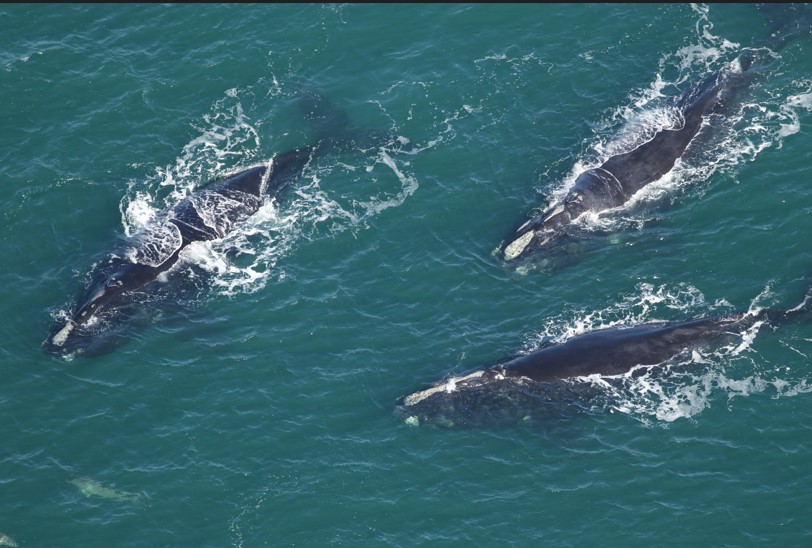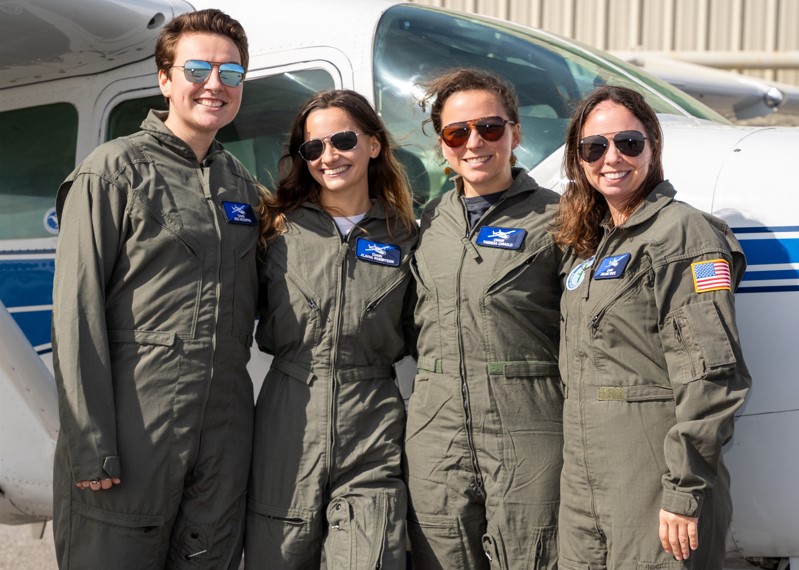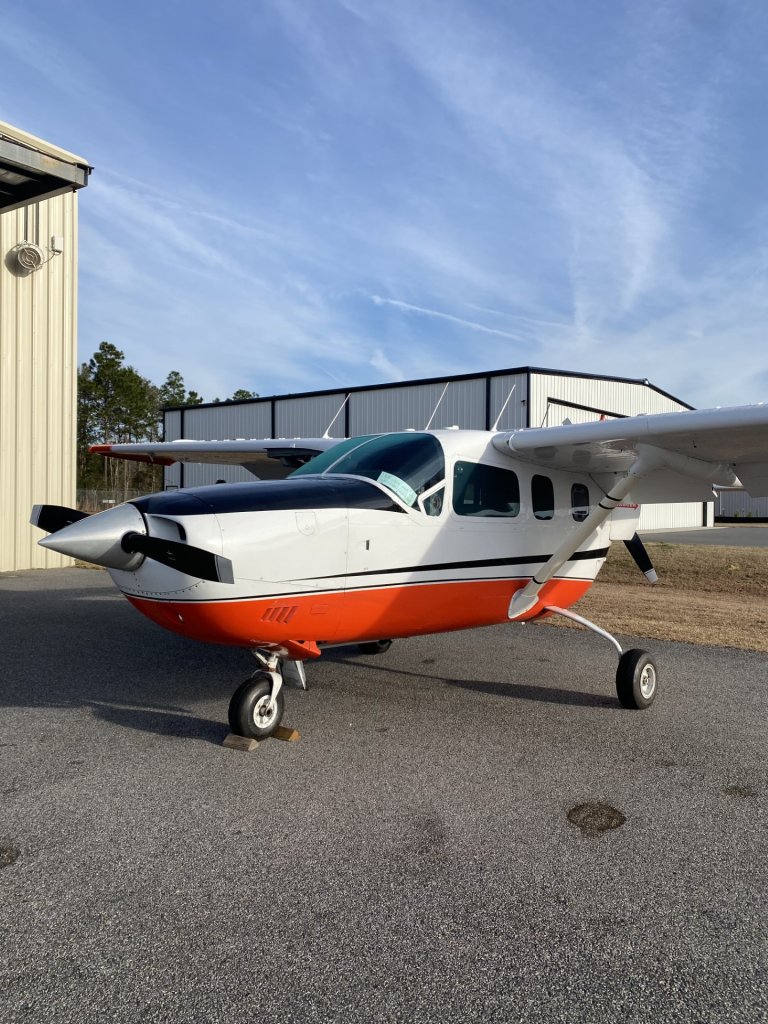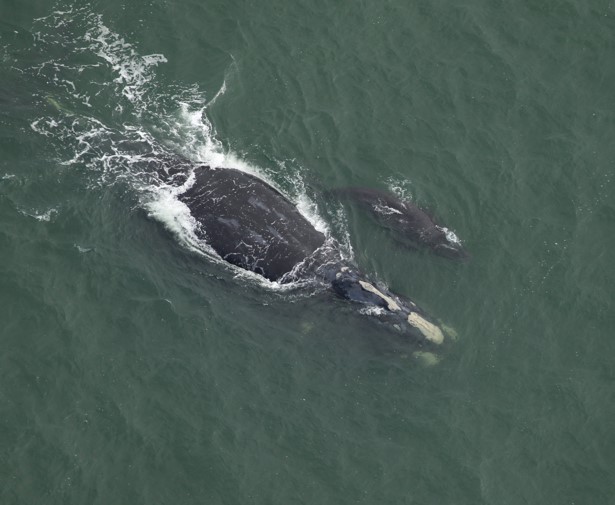North Atlantic Right Whale Protected by Pawleys Island Team
Critically endangered: Research team based in Pawleys Island studying North Atlantic right whales
Pawleys Island visitors and residents can now help the North Atlantic right whale, one of the largest and most endangered animals on Earth, by reporting sightings.
A study taking place along the Atlantic coast, from Cape Canaveral, Florida, to the North Carolina/Virginia border, tracks and protects these amazing gentle giants. One of the research teams involved in this study is based in Pawleys Island and flies out of the Georgetown County Airport.

The Pawleys Island research team, which covers up to 56 miles offshore from Wilmington, North Carolina, to the South Carolina/Georgia border, is one of three organized by Clearwater Marine Aquarium Research Institute. The other two are based in Beaufort, North Carolina, and St. Simons Island, Georgia. The Florida Fish and Wildlife Conservation Commission also has a team based in St. Augustine, Florida.
The South Carolina team consists of team leader Jess McCoppin and two observers, Alayna Robertson and Theresa Ciraolo. McCoppin said right whales are traveling through South Carolina coastal waters between November and April each year, and the public can help make it a successful journey for them.
“Involving the public in the conservation of the North Atlantic right whale is paramount for the survival of the species,” McCoppin said. “By just being aware that they are traveling through South Carolina coastal waters between November and April, boaters can take caution while out on the water.”

McCoppin said if anyone in the public sees a North Atlantic right whale, or any large whale, it should be reported with any information or photos using the Whale Hotline: 1-877-WHALE-HELP or report the sighting to the U.S. Coast Guard on marine radio channel 16. There are also several other large whale species in the Atlantic Ocean, including humpback whales, beaked whales, sperm whales, and fin whales.
“So far this season, we have responded to two public sightings of North Atlantic right whales in South Carolina, and we were able to identify and collect data on those whales,” she said. “Reporting whales really does work to help protect the species.”
McCoppin said a sub-population of North Atlantic right whales migrate annually to southeastern coastal waters from the northeastern US/Canadian east coast to have their calves. The North Carolina and South Carolina teams conduct surveys from Nov. 15 – April 15. The Georgia and Florida teams conduct surveys from Dec. 1 – March 31.
“Aerial surveys have been occurring since the mid-1990s in the Florida area,” McCoppin said. “Four years ago, the current structure of the North Carolina/South Carolina surveys began when the U.S. Army Corps of Engineers provided funding for the surveys.”

With only an estimated 360 North Atlantic right whales remaining and less than 70 reproductive females, these research and conservation programs are key to saving this critically endangered marine mammal. Clearwater Marine Aquarium Research Institute scientists have collected more than 20 years of aerial survey data on this species during its critical calving time in the southeast.
This data has led to ship speed reduction and expanded habitat protection, halting whale mortality in the southeast. During the team’s daily flights each winter, scientists warn mariners from North Carolina down to Florida about whale locations to avoid vessel strikes and alert rescuers about whales entangled in fishing gear, two leading causes of mortality for this species.
“Boaters should take caution while out on the water,” McCoppin said. “If you see a whale, please slow down (less than 10 knots) and stay at least 500 yards from the whale. It is against federal law and the Endangered Species Act to be within 500 yards of a North American right whale.”

She said their surveys mitigate threats of vessel strikes in real time.
“When a whale is spotted from the plane, observers send a ‘Whale Alert’ to commercial and military mariners in the area to notify them of a whale in the vicinity so they can take extra precautions,” McCoppin said. “Our surveys have also located whales entangled in fishing gear and jumpstarted disentanglement responses. All the data we collect about North American right whales, in conjunction with other research organizations, directly contributes to informed conservation strategies for the species.”
She added that so far this season, the group has sighted 17 right whale calves in South Carolina, Georgia, and Florida waters.
“Generally, the North Atlantic right whale calving ground was thought to be in Georgia and Florida, but the increase in aerial surveys in the Carolinas has found that some calves are spotted further north,” McCoppin said. “This season, two calves were spotted in South Carolina before making their way down to Georgia, suggesting they were born north of the established calving grounds.”
By Clayton Stairs / tourism manager for the Georgetown County Chamber of Commerce